And our survey says: why won’t Family Fortunes stop? It’s relentless. Just when you thought there couldn’t possibly be any more people whose families actually wanted to go on television next to them and make themselves look stupid by giving silly answers to pointless questions – there were. Family after family…aunty this, uncle that, cousin whoever – there were hundreds of them. And nowadays you not only have to watch witless reality show ‘stars’ and their relatives competing against z-list soap actors and their kin, you also have to put up with bland-bombshell Vernon Kay presenting the whole thing. He’s no Bob Monkhouse, that’s for sure.
Family Fortunes has been on screen pretty much constantly since 1980, and in this time been through a variety of presenters, but the ultimate was the aforementioned Monkhouse, whose natural brilliance at jokes and quips first entertained the audience when the show began, until 1983. Max Bygraves took over for the next two years, with Les Dennis then taking over the reins on a long (and ratings-wise, successful) run from 1987 until 2002. Andy Collins (no, I’ve got no idea either) presented one series at the end of that year, and then everybody (well, me at least) breathed a sigh of relief as the tired and dated format came to an end. Except it was then revived in 2006 as All Star Family Fortunes, which of course was excellent news, as we all are aware that what already famous people really need is yet another arena in which to market themselves, instead of having a nice lie down in a darkened room, nowhere near a television camera.
To understand why this show should have pegged out years ago you need to understand what the show involved. Each week would find a team made up of five people related to each other standing behind a long desk, opposite another family. The presenter would start by inviting one person from each side to come up to a pedestal in the middle of the set. He would then ask the well-known question ‘We asked 100 people to name….’ (which could be anything from ‘….famous British monuments’ to ‘the first thing they would buy if they won the lottery’) and a player would buzz in with an answer. If they managed to guess the top answer on the large display board at the back of the set (i.e. the answer that the most people out of the 100 gave) they could then choose to play - if they felt their family could come up with the remaining answers - or pass to the other team if the category was a tough one.
The presenter would then walk over to the family that was going to play this round and make inconsequential (and often embarrassingly banal) small talk: ‘So Uncle Fred, you ride a bicycle?’ before asking for another answer to the original topic. The idea was to find all the responses given in order to win money; the number of people (from the 100 asked) who gave each correctly-found answer would be converted into pounds. If one of the team gave an incorrect answer then the board gave that famous ‘Eh-Er’ noise beloved of Dads everywhere when their teenage offspring ask for a tenner to go out; hear three ‘Eh-Ers’ and the opposing team got an opportunity to ‘steal’ the money by guessing a missing answer. If they also got an ‘Eh-Er’ then the first team got to keep however much money they had already made. In the second series onwards the teams could also win prizes when a particular answer was found; mostly those old game show staples of HI-FIs, TVs and weekend breaks, but occasionally something more interesting (such as a year’s supply of beer) was also won.
It got even more – er – exciting after the break, when the teams competed for ‘Double Money’. Yes, as it implies, this was exactly the same as the last round - more strange questions, more inane small talk - but each answer was worth two pounds, rather than one. There were fewer answers to guess each time as well, so it was slightly more challenging than the round before. The first family to get £300 in answer money went on to the final, ‘Big Money’. Big thrills.
In ‘Big Money’ two players from the winning team took part in a speed round. The first player would be put under a spotlight in the darkened studio, whilst the second was led off to a soundproof booth so they would be unaware of what was being said on stage. The presenter would then explain that there were 15 seconds on the clock, and ask the contestant five quick-fire questions such as ‘Name something you might wear on special occasions’, ‘Name a cheese made in the UK’ with answers based on the whole ‘asking 100 people’ scenario again. The second contestant was wheeled back on and asked the same questions, but given twenty seconds this time in case they duplicated one of the first answers. If they got over 200 points then they won the top cash prize, which varied from a maximum of £1000 in the first series, to £5000 later on (not huge amounts, but even less when you realise that it had to be shared between the entire family). In 1994 a ‘bonus star prize’ was added; any team who found all five top answers (i.e. the ones that the majority of each 100 people had chosen) on the board won a car, and from 1998 had a choice of either the car or a holiday. In Andy Collins’ (still no idea) daytime reincarnation of the show the prize values actually dropped. Not sure how they sold that one – ‘Hey, come and humiliate yourself and your family but for less money, wahey!’ In fact they didn’t sell it, and perhaps that’s why it only lasted one series.
Of course the prizes were not the reason that most people tuned in to watch Family Fortunes; no, the stupid answers given by the panicking contestants were why most people tuned in. ‘Name a game that uses a black ball: Darts.’ ‘Name a number that you might have to memorise: Seven.’ ‘Name an animal that lives in the English countryside: A lion.’ ‘Name an animal used as a form of transport: A turtle.’ You see? Hopeless under pressure. And funny.
We had a couple of years’ respite from Family Fortunes between the end of 2002 and 2005, until those omnipresent cheeky chappies of presenting, Ant ‘n’ Dec, brought it back as their Gameshow Marathon Grand Final (thanks guys) with the families of never-off-the-telly-either pair Vernon Kay and Carol Vorderman. Kay then went on to host All Star Family Fortunes in 2006, where the teams of non-famous families were replaced with, as I’ve already mentioned, celebrities and their relatives. I say celebrities, but I’ll give you a selection of the guests who’ve appeared so far and let you make up your own mind: Chris Moyles, Jenni Falconer, Eamonn Holmes, Christopher Biggins, Vanessa Feltz, Sean Maguire, Jane MacDonald, the cast of The Only Way is Essex. Yes, that’s what I was thinking too.
And it’s still going on. 22 series in the original Family Fortune run, and series eight and counting of All Stars. And with the ever-increasing number of reality shows churning out more and more ‘celebrities’ faster than we can count, I can’t see it ever stopping. Eh-Er.


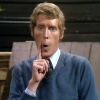
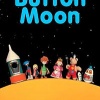

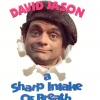
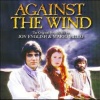
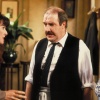
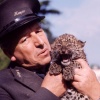
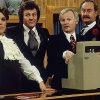
Do You Remember Family Fortunes?
Do You Remember Family Fortunes?